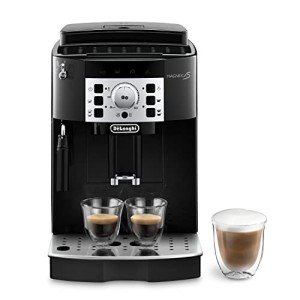Bean to Cup Espresso Machines: The Complete Guide
Worldwide of coffee enthusiasts, the bean to cup espresso machine represents the pinnacle of a quality brewing experience. It integrates the freshest coffee beans with innovative developing technology, allowing users to create café-quality espresso and coffee beverages from the comfort of their own kitchens. This short article checks out the features, benefits, and shortcomings of bean to cup espresso machines, in addition to a choice of popular models offered in the market.
What is a Bean to Cup Espresso Machine?
A bean to cup espresso machine is an automatic coffee maker that incorporates the grinder, developing unit, and coffee delivery system into one unit. Unlike standard espresso machines that require separate grinding equipment and might need manual developing strategies, bean to cup machines grind, brew, and give coffee in mere moments, making them easy to use and hassle-free.
Secret Features of Bean to Cup Espresso Machines
Here are essential features that consumers need to consider when searching for the perfect bean to cup espresso machine:
- Built-in Grinder: Freshly ground coffee is crucial for a terrific cup. Many bean to cup machines feature an integrated mill that allows users to select grind size and dose.
- Personalized Brewing Options: Quality machines use adjustable settings for brewing temperature, coffee strength, and milk frothing capabilities, accommodating diverse tastes.
- User-Friendly Controls: Many machines include intuitive touch screens or LCD screens for simple navigation between brewing alternatives.
- Automatic Milk Frothing: For those who delight in cappuccinos or lattes, some machines include automatic frothers, permitting velvety and steamed milk at the touch of a button.
- Easy Cleaning and Maintenance: Cleaning mechanisms, such as removable developing units and automatic cleaning cycles, are essential for keeping machine health.
Benefits of Bean to Cup Espresso Machines
- Freshness: Since the machines grind coffee beans on demand, customers get the freshest coffee possible.
- Convenience: With a bean to cup machine, brewing coffee ends up being a simple and easy procedure, requiring little bit more than the press of a button.
- Versatility: Many designs use a series of developing choices, from espresso to coffees, making them versatile for each coffee choice.
- Space-Saving Design: By incorporating multiple performances into a compact style, bean to cup machines save counter area.
- Consistency: Automated processes decrease human mistake, making sure that every cup of coffee is consistently high quality.
Disadvantages of Bean to Cup Espresso Machines
Despite their various advantages, bean to cup espresso machines do have some drawbacks:
- Cost: High-quality machines can be pricey, presenting a barrier for many possible purchasers.
- Size: Some models can be large, needing ample counter area.
- Repair and maintenance: While many machines have self-cleaning functions, preserving them and repairing concerns can be made complex and pricey.
- Restricted Customization: Compared to traditional espresso machines, users may discover less control over particular components of the brewing process.
Popular Bean to Cup Espresso Machines
Here is a selection of popular bean to cup espresso machines presently offered in the market:
| Brand & & Model | Mill Type | Milk Frother | Cost Range * | User Rating |
|---|---|---|---|---|
| De'Longhi Dinamica | Burr | Manual | ₤ 1,200 - ₤ 1,500 | 4.5/ 5 |
| Jura E8 | Cone-shaped | Automatic | ₤ 2,200 - ₤ 2,600 | 4.7/ 5 |
| Saeco PicoBaristo | Ceramic | Automatic | ₤ 1,000 - ₤ 1,300 | 4.6/ 5 |
| Breville Oracle Touch | Dual Boiler | Automatic | ₤ 2,000 - ₤ 2,400 | 4.8/ 5 |
| Philips 3200 Series | Ceramic | Handbook | ₤ 800 - ₤ 1,000 | 4.4/ 5 |
* Prices are approximate and differ by merchant.
Choosing the Right Bean to Cup Espresso Machine
When choosing the right bean to cup espresso machine, consumers should consider numerous aspects:
- Budget: Determine how much you're ready to buy a machine; this will assist limit your options.
- Space: Measure your counter area to make sure the selected design accommodates your kitchen area design.
- Preferred Beverage Type: If you favor milk-based drinks, search for models with automatic milk frothers.
- Maintenance Preferences: Decide how much time you're ready to dedicate to cleansing and maintenance.
Often Asked Questions (FAQs)
Q1: Do I need any unique coffee beans for a bean to cup espresso machine?
A1: While you can use any whole coffee beans, medium to dark roast beans often work best for espresso. Freshness matters, so opt for recently roasted beans for optimal taste.
Q2: Are bean to cup espresso machines simple to clean up?
A2: Many models feature detachable components and self-cleaning functions. Nevertheless, routine upkeep, including descaling, is essential to keep the machine in top shape.
Q3: Can I make other coffee beverages besides espresso with a bean to cup machine?
A3: Yes, most bean to cup machines can brew different coffee beverages, including lattes, cappuccinos, and coffee shop au lait, thanks to their integrated developing and frothing capabilities.
Q4: How long do bean to cup machines usually last?
A4: With proper upkeep, quality bean to cup machines can last between 5 to 10 years, depending on usage and care.
Bean to cup espresso machines provide an exceptional service for coffee fans seeking quality, benefit, and flexibility in their developing process. While Whole Bean Coffee Machine may be substantial, the capability to enjoy freshly ground and brewed coffee in the house frequently outweighs the expenses. Whether you're an espresso fanatic or simply starting your coffee journey, investing in a bean to cup espresso machine can greatly improve your at-home coffee experience.

